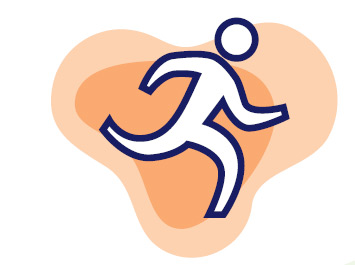Social and Emotional Learning

Social and emotional learning (SEL) is a critical component of educating today’s youth and a key component of health and physical education instruction.
In preparing for school reentry, intentionally incorporating SEL will be essential to supporting students through the COVID-19 pandemic.
Right now, “children of all ages are struggling with the ensuing stress and trauma. While adversity impacts learning, these effects can be mitigated by strong, trusting relationships and opportunities to develop social and emotional learning (SEL) skills” (Darling-Hammond, 2020). Many administrators and educators have struggled to effectively incorporate SEL throughout the culture of their school, even prior to COVID-19. Physical education and health education naturally support and align with CASEL’s SEL core competencies. These skills can be developed through distance learning, hybrid, or in-school instruction.
The Crosswalk for SHAPE America National Standards & Grade-Level Outcomes for K-12 Physical Education and CASEL Social and Emotional Learning Core Competencies (PE/SEL Crosswalk) aligns CASEL’s SEL competencies and related skills to SHAPE America’s National Standards and Grade-Level Outcomes for K-12 Physical Education. This document serves as a resource for those aligning SEL competencies into the existing National Standards and can be a foundational document to help states and/or districts develop specific guidance that incorporates their own policies, standards, or guidance for SEL.
The National Health Education Standards (NHES) and SEL core competencies crosswalk will be released summer 2020. In the meantime, many of the NHES are aligned with or support CASEL competencies.
The below considerations for SEL are important for health and physical education teachers to think about when planning for school reentry, whether schools are operating under a model of in-school instruction, distance learning, or hybrid learning.
Specific considerations related to SEL:
- What are you already doing that easily aligns with SEL competencies?
- Are there any SEL competencies that are not covered or need to be covered more in depth within your curriculum?
- When/how can you share the importance or value with students of a specific SEL skill(s) being taught within a
lesson?
- How will wearing a face covering limit my ability to interpret my students’ emotions or facial expressions?
- What are specific skills that you teach your students that can be used through the school building or at home
related to SEL (e.g., deep breathing exercises, moments of pause, zones of regulation, emotion check-ins/rating
scales)?
- Are there SEL skills others use that you can incorporate into your activities?
- How can these routines transfer easily if the school were to abruptly change the model for learning (i.e.,
switch from in-school instruction to distance learning)?
- How can you prepare for students who may demonstrate a lack of social skills (which may not be intentional or a
sign of disobedience) due to physical distancing?
- What does the school day look like now with physical distancing measures in place (i.e., students staying within
their classrooms most of the day, limited times to use the restroom)?
- How will these new routines and logistics impact your students’ social and emotional needs (e.g., higher levels
of stress, angst caused by staying in the same class for long periods of time, frustration over wearing face
coverings, fear of getting sick)?
- What behavior interventions can you plan for in response to misbehaviors caused by new routines and logistics?
- Does a school-wide SEL plan already exist? If so, how can you ensure health and physical education are included?
- How can you be a part of your school or district’s SEL planning team?